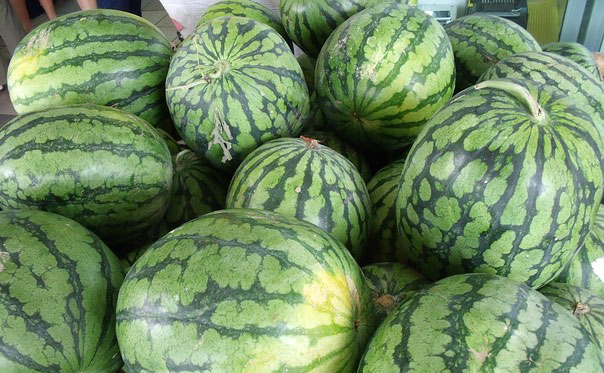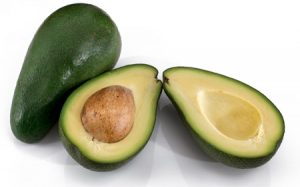Follow the following watermelon farming tips and techniques to succeed with watermelon farming in Kenya. You must plant the best watermelon varieties to get big harvests and maximum profits.
What are the best varieties of watermelon to grow in Kenya, and how different are they in terms of maturity time, resistance to watermelon diseases and size of their fruits? Watermelon seeds germinate well when sown in warm soil.
Since most of Kenya is warm, you can plant your watermelon seeds directly outdoors. Place the seeds at a depth of about 1 inch. Keep the seeds well watered until and after germination. After they germinate, the watermelon plants are very tender and should not be transplanted during the cold season.
Other watermelon farming tips include techniques to ensure pollination. Pests such as spider mites, leaf miners and thrips can turn expected profits into a huge loss within a week. Learn techniques to avoid and control watermelon pests, and how to determine their readiness for harvest.
How do Watermelons Grow?

Watermelons are grouped under the cucurbiteae (gourd) family. They are vines that spread over the ground. Other common plants that are closely related to watermelons are pumpkins and squashes. They are one of the best fruits for bigger loads.
Some common watermelon varieties grown profitably in Kenya are:
- Sukari F1 – is the most popular watermelon variety in Kenya. It matures earlier than other varieties. Most people find the Sukari F1 sweeter and more fleshy. Its fruits are also bigger, heavier and the rind has dark green stripes. Its demand is always high.
- Zuri F1 – this watermelon variety has fruits that weigh as much as 12kg and have a strong rind that has a dark green color. It is recommended for watermelon farming in Kenya because Zuri F1 is resistant to strains of fusarium.
- Charleston Grey – this variety of watermelons has lighter stripes on its hard rind. The flesh is sweet and red in color. These watermelons are drought resistant and mature in about 100 days.
- Early Scarlet F1 – it is early maturing (about 85 days), weighs up to 12 kg and can yield up to 60 tonnes per acre. It has deep-red flesh and a dark-green striped outer rind.
- Other varieties grown under watermelon farming in Kenya include Sugar baby and Crimson Sweet. The Sweet Rose F1 variety is developed by Simlaw Seeds and the Kenya Seed Company. You can get advice on the best watermelon varieties for your region from the local agrovets.
Watermelon Farming Tips
- You need plenty of land to succeed with watermelon farming in Kenya. Watermelons need a lot of water, nutrients, space and warmth. The plants do not grow well under extreme heat, and soggy, humid conditions will breed fungal diseases.
- Watermelons need enough water, regular top-dressing with fertilizers and average daily temperatures of 20-25 degrees to produce biggest and sweetest fruits. Plant the seeds when the soil is warm, in the open (for the sun) and provide constant drip irrigation if rainfall is inadequate. Weeds will deplete the available water–remove weeds regularly. Inadequate water or a nitrogen deficiency may result in yellowing of watermelon leaves.
- Always buy watermelon seeds to get maximum returns with watermelon farming in Kenya. Like any avocado fruit or citrus farmer will tell you, most seeds taken directly from the fruits do not grow true to their type–they give less yields and grow slowly. This is why avocados and citrus farmers graft their trees. Hybrid watermelon seeds give highest yields and are resistant to common watermelon pests and diseases such as leaf spot, blight and powdery mildew. Spider mites can destroy a whole crop of watermelons, as well as thrips and leaf miner.
- Do not mulch young watermelons. Worms that feed on tender stems love to hide under mulches, and young watermelons are vulnerable to these pests. Mulch much later when the vines are strong. You can use raw manure to mulch–save water and add nutrients at the same time. Get top-dressing advice and pest & disease control products at your local agrovets.
- Watermelons need insects such as bees for pollination. The plants grow both male and female flowers on same vines. Bees unknowingly deposit male pollen onto female flowers as they feed on the nectar in the flowers. If your plants are not producing enough fruits, pollination might be an issue. You can do hand pollination if the bees in your region are unusually lazy…take male flowers and brush their pollen at the center of female flowers.
- Watermelons are ready for harvesting when the fruits develop a light-colored patch at their bottoms. The curly tendrils begin to dry up, and the outer rind becomes harder and less colorful. You can also tell when they are ready by tapping them gently and listening for a hollow sound…which is then confirmed by eating one or two.
Follow these tips to make extra money through watermelon farming in Kenya, and check the pilipili hoho farming in Kenya guide.
Share On Your Favorite Social Media!
Use the following links to spread the word...



